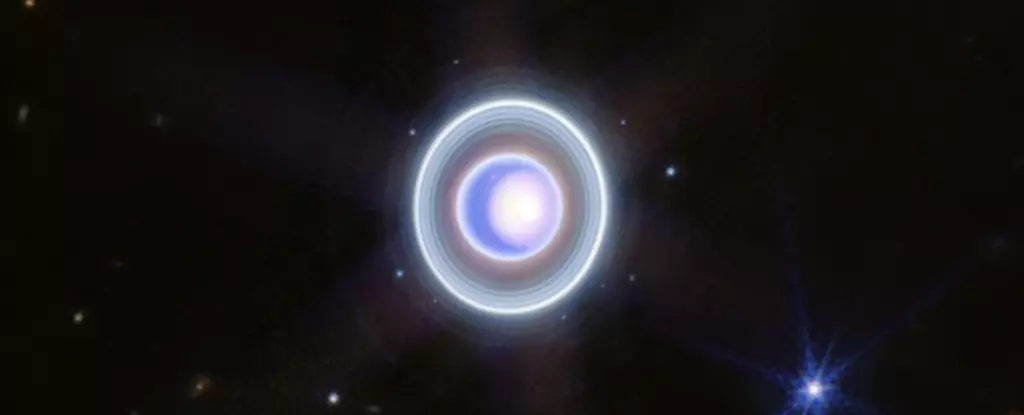While Jupiter and Saturn often steal the spotlight with their extensive collections of moons, recent discoveries have shed light on the moon populations of Uranus and Neptune. Ground-based telescopes have unveiled three previously undiscovered moons; one orbiting Uranus and two around Neptune. These findings bring Uranus’ moon count to 28 and Neptune’s to 16. The new moons have yet to be officially named, but they will follow the tradition of naming moons after characters from Shakespeare’s works for Uranus and Nereid sea goddesses from Greek mythology for Neptune.
The discovery of these faint moons marks a significant achievement in space exploration. The distant locations of Uranus and Neptune, combined with their dim moons that have wide, eccentric, and inclined orbits, present significant challenges for astronomers. These elusive satellites were captured through specialized image processing techniques that revealed their presence. The distances from Earth make it difficult to travel to these planets and observe them with telescopes, leading to a limited understanding of their moon populations compared to closer planets like Jupiter and Saturn.
Each of the newly discovered moons possesses distinct characteristics that set them apart. The smallest of Uranus’ moons, provisionally named S/2023 U1, measures around 8 kilometers (5 miles) across and has an orbital period of 680 days. On the other hand, the brighter of the two Neptunian moons, designated S/2002 N5, has a diameter of 23 kilometers (14.3 miles) and an orbital period of 9 years. Lastly, the smaller and fainter new Neptunian moon, known as S/2021 N1, is approximately 14 kilometers (8.7 miles) in diameter with an orbit of 27 years around Neptune.
The discovery of these new moons suggests that Uranus and Neptune possess outer moon populations similar to those of Saturn and Jupiter. Despite their unique characteristics and distant locations, the method of moon capture appears to be consistent across the giant planets of the Solar System. The grouping of these moons into similar orbits hints at the possibility that they originated from larger moons that broke apart after being captured by planetary gravity.
The identification of these secret moons presents exciting opportunities for future exploration of the outer Solar System. The similarities between the moon populations of Uranus, Neptune, Saturn, and Jupiter highlight the need for dedicated probes to unravel the mysteries of these distant worlds. By studying the origins and compositions of these moons, scientists can gain valuable insights into the formation and evolution of our Solar System.
The discovery of these hidden moons orbiting Uranus and Neptune underscores the vast potential for new findings in our cosmic backyard. While Jupiter and Saturn may have dominated the moon race in the past, the outer planets are now revealing their own secrets, expanding our understanding of the diverse moon populations within our Solar System. As technology continues to advance, we can expect even more remarkable discoveries that will shape our knowledge of the universe for generations to come.



Leave a Reply